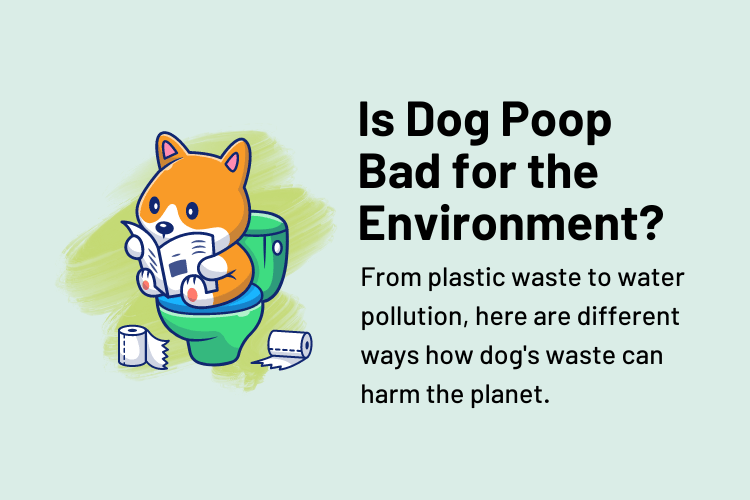
Scooping up after your dog is a normal part of any walk, but have you ever thought about the cumulative environmental impact of all the pet waste from our furry friends?
With more than 1 billion domesticated dogs in the world, it’s just as important to reduce their ecological footprints as our own. After all, recent research shows that the “carbon pawprints” of dogs and cats can be rather significant.
These are the biggest environmental impacts of dog poop:
Carbon emission
As animal feces decompose in an anaerobic environment (like a landfill), it releases methane gas, a greenhouse gas 28 times more powerful than carbon dioxide. This results in significant levels of carbon emission: a release of carbon particles into the atmosphere.
If this gas were harnessed, however, it could serve as a valuable source of energy. Brian Harper, a UK-based inventor of a streetlamp powered by dog poop, estimates that 10 bags of dog poop could power a streetlamp for two hours.
Water pollution
While leaving your dog poop in the park may seem perfectly natural, it can actually contribute to water pollution. Many water-borne diseases that harm both humans and wildlife are carried in animal feces and dog poop contains nutrients and pathogens, both of which can be harmful to our water systems.
Toxoplasmosis, for instance, is a protozoa found in cat feces that can wash into streams, rivers, and oceans through septic systems, sewage pipes, yards, and landfills, can infect birds, rodents, shellfish, and sea otters, causing illness and even death in these creatures. Other harmful bacteria are also found in animal feces, such as E. Coli and hookworms.
Plastic waste generation
Most of us dispose of our animal companions’ feces in plastic bags – doggie bags for our canines, and litter liners for that cat litter. We know that plastic bag waste is a major problem, but it compounds poop issues – wrapping animal waste in plastic serves to mummify the waste, preserving it until the plastic bag breaks down (which can take hundreds of years).
Worldwide, we go through an estimated 415 billion dispensable dog poop bags annually. Unsurprisingly, that results in a whole lot of plastic waste we have to deal with, contributing further to major ecological disasters such as the Great Pacific Garbage Patch. Biodegradable poop bags, composting, or creating a doggy outhouse are all solutions worth considering.
Biodiversity destruction
Nutrients from dog urine and feces can significantly influence the local biodiversity and ecosystems. Nitrogen and phosphorus are commonly found in dog foods. And, therefore, they also tend to end up in dog waste, which greatly affects the growth of plants.
That is because certain plants thrive on these nutrients, such as nettles and hogweed, while others do not. This creates an imbalance that leads to wildlife being affected as they may rely on the less dominant plant species for food and shelter.
Eutrophication
Another environmental issue connected to increased levels of nitrogen and phosphorus is eutrophication. These two nutrients are like sugar candy for algae. They bloom like crazy and use up a lot of oxygen in the water when they die and decompose, leaving less for the fish and other aquatic life while turning the water into a murky green mess.
If enough oxygen in the water is removed, a water system can become hypoxic: a place that cannot inhabit any life. Global warming is already reducing our waters’ oxygen levels, so we need to avoid exacerbating the issue by adding more nutrients and pushing our delicate aquatic ecosystems even closer to the brink.
